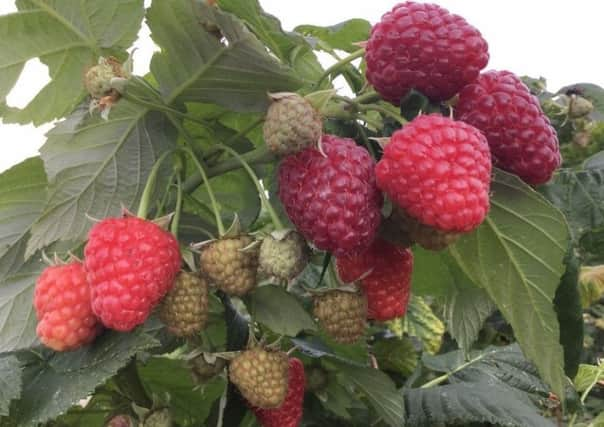Crop harvesting has come early this year


The Kelsae onions had lain on a wire mesh cradle, top growth removed, and were dried, ready for storage after a few sunny days, but the gardener was distracted. The lawns were yearning for the mower and overnight rain had been forecast, leaving no option but to act. Result: neat lawns, but wet onions, an opportunity missed. Such is the way with vegetable storage.
Although I’ve every reason to be pleased with the fruit and vegetable crops this year, the growing season has been unusual in advancing the maturity of many. As a result, we’ve had to adjust our harvesting and lifting approach.
Advertisement
Hide AdAdvertisement
Hide AdMaincrop peas and beans are generally productive from July to mid-September. The plants, by then being spent, are pruned to ground level and the nodular roots with nitrogen-fixing bacteria are left to enrich the soil. However, this year the pods all matured earlier and the site was cleared in August.
Schools’ October half-term break was often referred to as ‘bramble or potato-picking week’ because that’s when wild blackberries were at their best and farms harvested their main crop potatoes. This year the brambles began to fade with August, and any allotment-grown potatoes still in the ground by late October may well be invaded by slugs.
Victoria plum is such a reliable cropper. There’s an inordinate amount of ripening fruits. Some are bagged-up and handed to friends, others washed, de-stoned, packed and frozen. The fruit bowl is topped up daily and it’s windfall feast time for birds, butterflies, mice and wasps.
Safe pruning time has passed – to do so now would run the risk of disease entry through unhealed wounds.
Advertisement
Hide AdAdvertisement
Hide AdAutumn raspberries are in full production and the fruits are notably bigger than ever.
Thankfully, the bed is well away from the dessert apples, with which the wasps are preoccupied. While I’m picking and storing the lion’s share of Discovery, which is delicious, they’re concentrating on a small number of ripe ones. The simple ripeness test involves holding a fruit in the palm of your hand and twisting as you tilt it upwards. If it comes away easily, fine, but don’t force it.
Another two weeks will see the ripening of James Grieve, a tasty apple whose parentage includes Cox’s Orange Pippin. Egremont Russet is ready for picking by mid-October, and Braeburn will be harvested before November arrives.
Each of these varieties is self-fertile and a reliable annual cropper when decent weather coincides with blossom time.
Advertisement
Hide AdAdvertisement
Hide AdStorage is simple– they’re wrapped individually in newspaper and go into open-topped boxes that allow air circulation when stacked. When they’re stored in a cool, frost-free garage or shed, there’s a sumptuous fragrance in the air each time the door is opened for inspection.